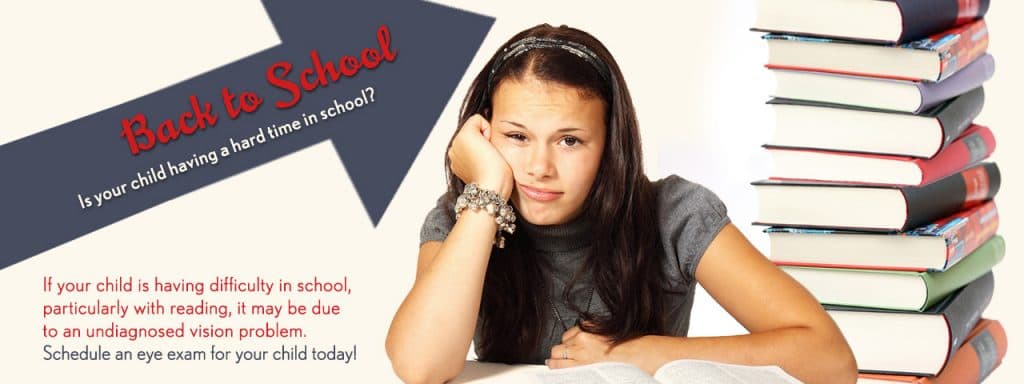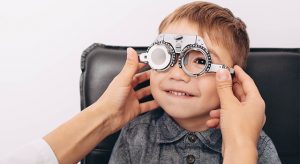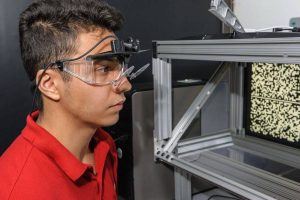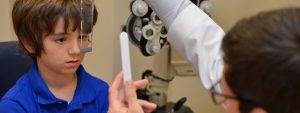Do you often lose your place while reading? Do words on the computer screen seem blurry? Do you suffer from frequent headaches or eye discomfort after reading or scrolling on your phone?
Convergence insufficiency affects up to 13 percent of the US population, both children and adults.
What is convergence insufficiency (CI)?
When you look at an object, your brain uses the visual information it receives from both eyes to process the image in sight. When your eyes converge, they work together as a coordinated team, both turning inward to focus on an object. With proper convergence, the object in sight will appear as it should, as a clear, single image.
Convergence insufficiency is a condition in which the eyes are unable to work together as a team when looking at near objects for an extended period of time. Instead of both eyes rotating toward each other to focus on the near object, they tend to drift outward, or away from each other. As this happens, your brain receives different visual information from the two eyes, causing double or blurry vision.
Convergence insufficiency is an eye-teaming problem, not an eyesight problem, and can also affect people with 20/20 eyesight.
Schedule a comprehensive evaluation of your vision and visual skills so that an eye doctor can help manage your CI.
What are the symptoms of CI?
Symptoms of CI surface during near vision activities, such as reading, using a computer, tablet or smartphone, and with high CI, can affect your vision when playing video games or watching a movie.
The primary symptoms of CI include both performance problems and physical symptoms.
Performance related problems include:
- Loss of concentration
- Loss of place while reading
- Reading slowly
Eye-related symptoms include:
- Eye discomfort or pain
- Double vision (diplopia)
- Blurred vision
- Headaches
For most people, an object can remain a clear and single image when placed as close as one inch from the nose. However, with CI, even viewing objects farther away from the nose, such as the distance at which you would hold a book or tablet, is difficult.
People with CI often experience blurry or double vision, eye strain, and headaches when reading or performing other near vision activities for an extended period of time.
If you are experiencing symptoms of CI schedule a comprehensive evaluation of your vision and visual skills.
SEE RELATED: Vision Therapy for Headaches: Success Stories
The only way to diagnose CI is with an eye exam
If you are experiencing symptoms of CI, and having difficulty concentrating at school or at work because near vision activities cause discomfort, visit your eye doctor for an eye exam.
Your eye doctor will ask you about your symptoms and conduct a series of diagnostic tests to look for eye teaming problems:
1. Near point of convergence test: This test will determine the closest point (to your face) at which your eyes are able to converge.
People with CI generally have a near point of convergence of more than 6 cm from the face.
2. Positive fusional vergence test: This test will determine the integrity of your eyes’ neuro-muscular ability, or the ability of your eyes to converge inward. Your eye doctor will use a series of prisms with increasing magnitude, and ask you to maintain single vision while looking through each prism.
Neuromuscular ability is the underlying problem of CI.
3. Exodeviation test: This test will determine the extent of your eyes’ outward drift (exodeviation).
Convergence insufficiency will cause a greater exodeviation for near objects than for distant objects.
4. Accommodation test: This test will determine your ability to shift focus from distant objects to near objects.
A high percentage of people with CI also have trouble focusing the eyes on near objects.
LEARN MORE: Vision Therapy for Children
If you are experiencing symptoms of CI, or are struggling to perform at school or work, schedule a comprehensive evaluation of your vision and visual skills.
An accurate diagnosis will put you on the right path toward clear and comfortable vision.










